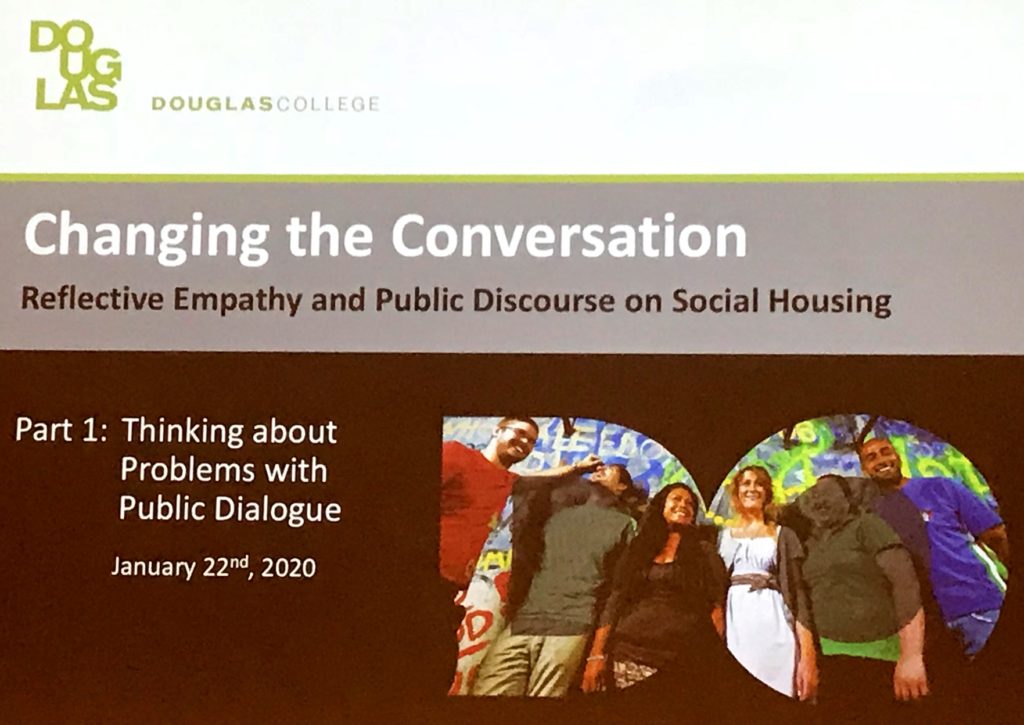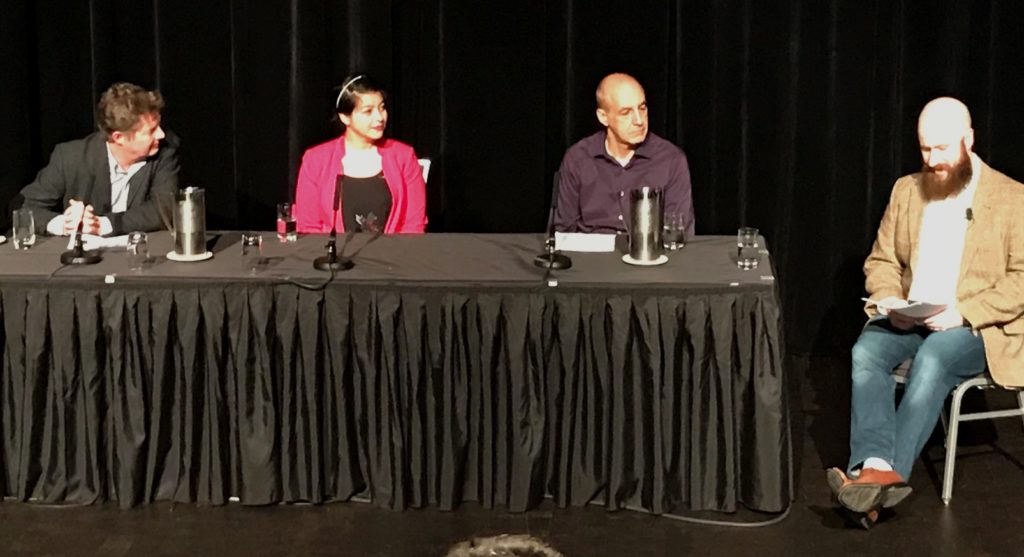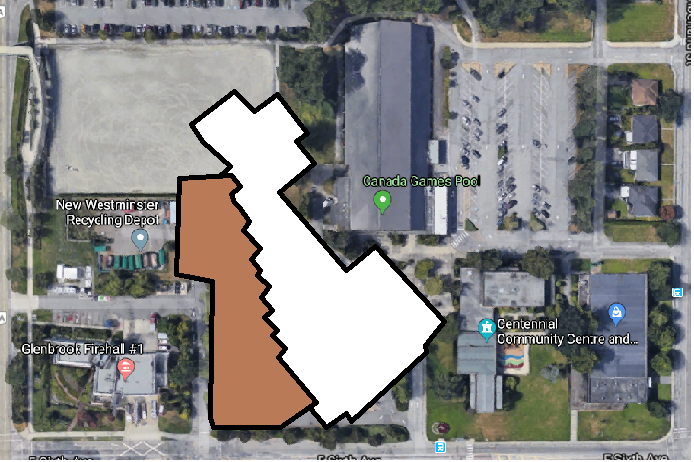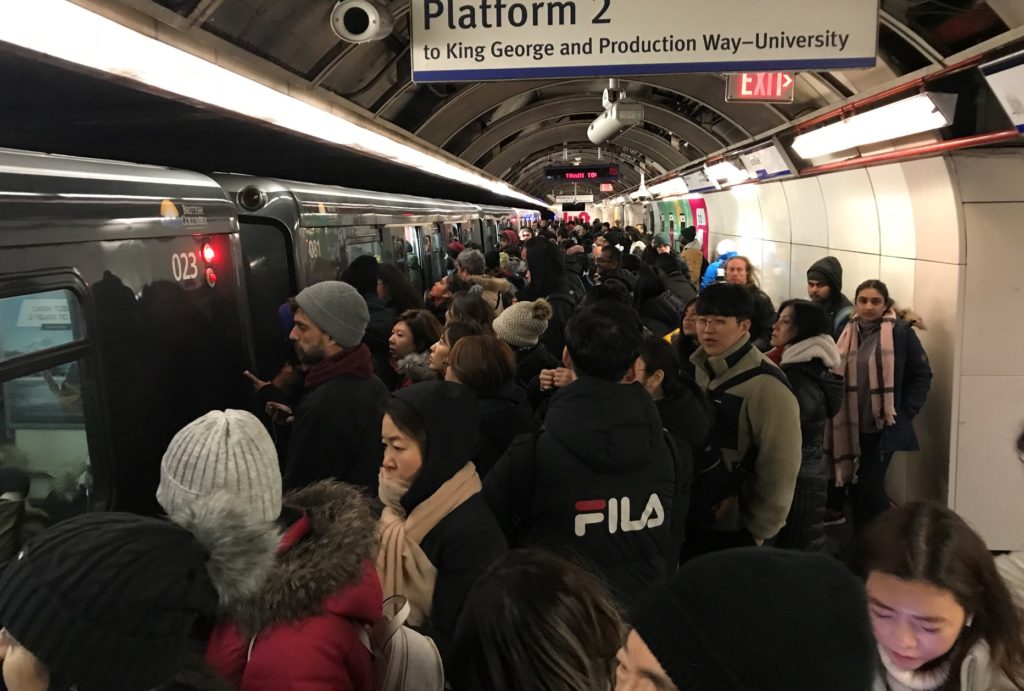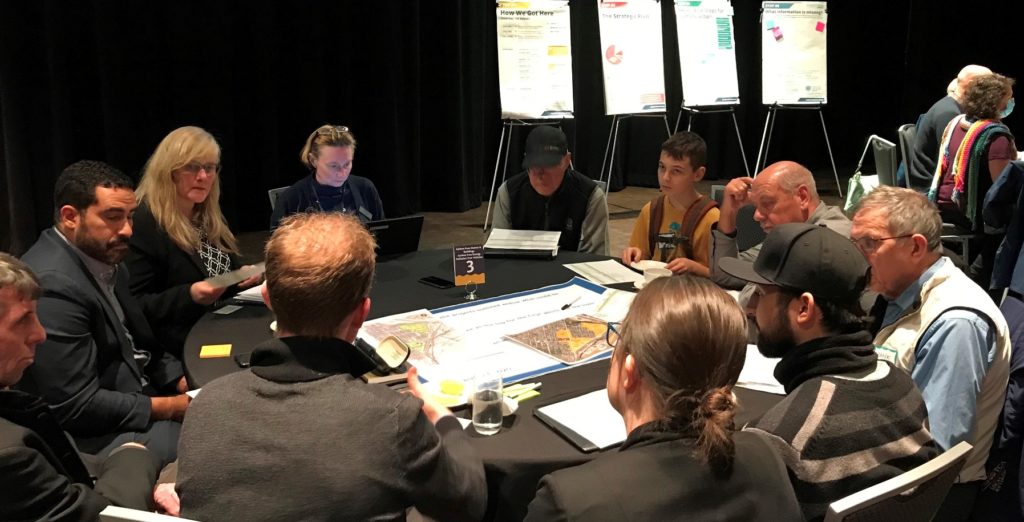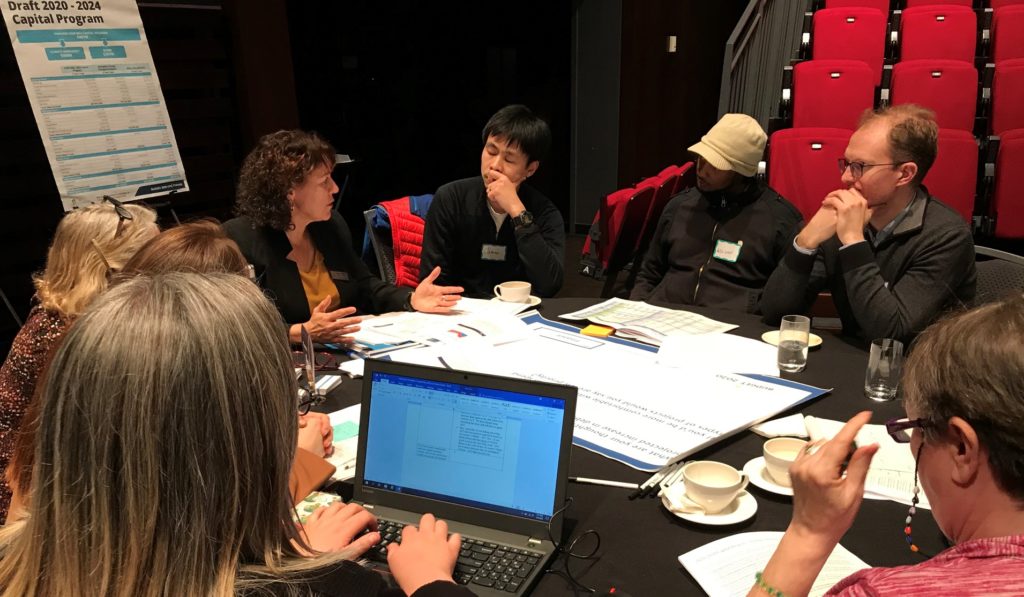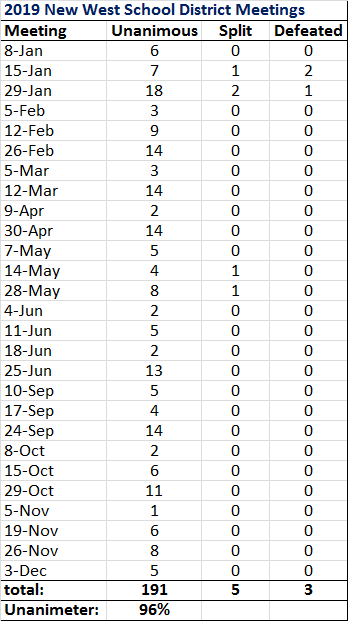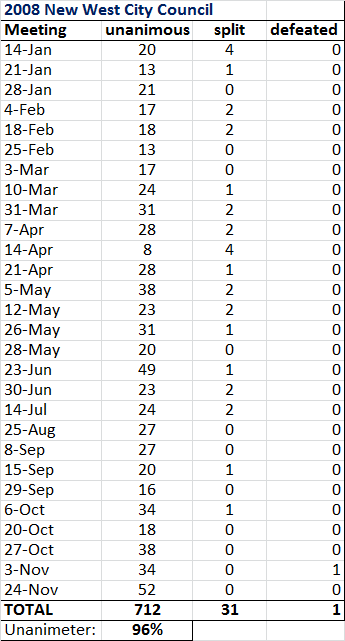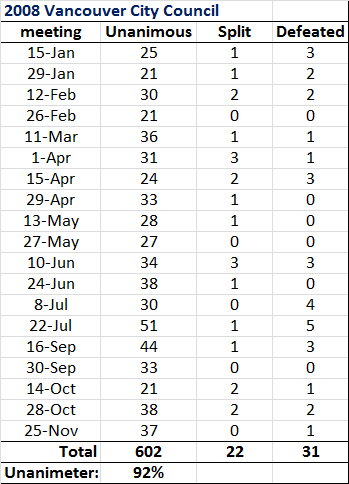Our meeting this week was a short one agenda-wise, but we made up for it with and afternoon workshop that involved discussion about the upcoming Climate Action public consultation, Council expense policy, and the Regional Growth Strategy. More on those in later posts. We also had some Public Hearings, but we got through our Regular Agenda first:
The following items were Moved on Consent:
Freedom of Information and Protection of Privacy Act Report for 2019
The City is subject to the Freedom of Information and Protection of Privacy Act, which means we have staff who answer to requests for info, and through the framework of the FOIPPA, screen that info for privacy protection concerns before releasing it to the applicant. Annually, they report out on the number of requests and response rate.
Requests have been going up in the last few years. Most applications are related to insurance or legal claims, usually between parties that do not include the City – so things like car crash reports and building inspection reports are common targets. Staff have provided responses within the regulated timeline (30 days) in all cases, which is the goal. Of the 86 requests in 2019, two were forwarded to the provincial Commissioner.
Carter St. Access Road Project – 2019 Budget Variance
As the TMH project in Queensborough is finally coming along, the work the City has long been planning to do to improve the road access to the Queensborough Community Centre coincides with the need to provide road access to the housing – the so-called “Carter Street”. Building roads and bringing old ones up to modern standards in Q’boro is expensive because of soil conditions. In this case, it is a cost-sharing between BC Housing and our existing paving and sewer rehabilitation programs. This cost was always anticipated, but timing has changed, and with the 2020-2024 Financial Plan not completed yet and the road needing to get built, we need to give official authorization to pay for this work (which would normally come with that Financial Plan)
Recruitment 2020: Appointments to Advisory Committees, Commissions, Boards and Panels
Here are the new Committee members. We changed a bit how appointments were made this time around, with staff providing an early screening and recommendations based on providing appropriate skill sets and lived experience from across our community. But Council ultimately has to approve the appointments. If you applied, look for your name here. If you were not selected, please apply again next year, because the new selection process should also increase the turnover of applicants. For everyone who volunteers for City committees, thank you! For those on the FIPRAC and STAC, we will see you soon!
Recruitment 2020: Appointments to the New Westminster Library Board
We also appoint people to serve on the Library Board!
Release of Council Resolution from Closed Meeting: Massey Theatre Working Group
Now that the Theatre Strategy is passed and being implemented, the timing is appropriate for us to have a conversation with the Massey Theatre Society to determine how we can get the most out of our continued relationship in both the Anvil Theatre and the Massey Theatre.
301 Stewardson Way: Development Variance Permit to Vary Sign Bylaw Requirements – Consideration of Notice of Opportunity to be Heard
You might have noticed Key West Ford did a bunch of renovations to their buildings at their dealership at 3rd and Stewardson. They now want to replace their signage, and the unique character of a car dealership doesn’t really mesh cleanly with our Sign Bylaw, which is meant to reflect somewhat more urban settings. So Key West is asking for a sign Bylaw variance. There will be an Opportunity to be Heard on February 24th, so come on out and tell us what you think.
Major Purchases September 1st to December 31st, 2019
This is our every-four-months report on major purchases by the City, so you can see how we spend your money, and the results of our public procurement processes. This also discloses and sole-source contracts we give out, to keep our spending transparent. .
2019 New West Grand Prix
This is a reporting out on the New West Grand Prix, which has become one of the keystone summer events in New West. We have more sponsors coming on, and attendance is up, even if the weather wasn’t perfect this year. Some of the goals around supporting the kids race and getting downtown businesses more engaged were met, and we had (as always – thank you New West!) a tonne of volunteers. We also underspent the budget thanks to some cost efficiencies by staff and 1/3 of it being covered by expanded sponsorship. On to 2020!
The following items were Removed from Consent for discussion:
Proposed Child Care Facility Ownership and Management Policy and Provincial Child Care Funding Update
The City is supportive of new Childcare facilities. It is well known that there is a childcare crisis in the City, and has been for a while, but both the City and the provincial government are working hard to address that gap. Of course, “available” and “affordable” are two different things, and we need to improve both.
The current model for most affordable daycare is to have some form of not-for-profit receive subsidies to provide the service that the market simply will not fulfill. The big start-up capital cost is impossible for that model, so the City is making spaces available in City buildings (the QCC, and the CGP replacement, for example) and is leveraging development amenities to get childcare spaces built as part of new buildings.
This policy will help guide what type of operator is appropriate for these City-supported facilities, and where the division of responsibilities lie, like who is responsible for building repairs or utilities in these models? The report here outlines a proposed policy framework to answer these questions and provide some certainty for the operators.
Investment Report to December 31, 2019
This is our regular end-of year report on our investments, for the public record. The City has about $179 Million in the “bank”, most in reserves set aside for upcoming capital projects. We made $4.3M on those investments this year, but the City invests in a pretty low-risk way.
Following up on previous motions from Council to look at divestment from fossil fuels, there has been some progress through the City of New West lobbying the Municipal Finance Authority and other municipalities interested in climate action. It is too early to make any kind of official announcement, but the MFA is working on it, and we may hear something as soon as this spring.
We then adopted the following Bylaws:
Development Approval Procedures Amendment Bylaw No. 8152, 2019 and
Development Services Fees and Rates Amendment Bylaw No. 8153,2019
As discussed on December 9th, these Bylaws that adjust the fees for some development service fees as part of our larger process streamlining were adopted by Council.
Building Bylaw Amendment Bylaw No. 8161, 2020
As discussed last meeting, this Bylaw that changes the Building Bylaw to help us support higher-efficiency buildings through the BC Energy Step Code and applying a performance bond on new buildings, was adopted by Council.
Development Services Fees and Rates Amendment Bylaw No. 8177, 2020
As discussed last meeting, this Bylaw to adjust Development fees (once again!) to increase out Preliminary Application Review Fee was adopted by Council.
We also had a single item of New Business
271 Francis Way
We had a delegation a few months ago about a conflict between Onni and a Strata in Victoria Hill around parking. Our staff has looked deeper into the issue, and in this motion, Council directs staff to take no further action on this issue. I don’t want to talk further about it right now, because this involves a conflict between two parties in the City and I think it would be inappropriate for me to interject myself in this blog.
And after a short break, we had three Public Hearings:
Official Community Plan Amendment Bylaw No. 8151, 2019
This is a bit of an Omnibus OCP amendment to fix a few anomalies in the existing Official Community Plan.
This includes shifts in the Land Use Designation for four specific properties. These are not rezonings of the properties, and are not the result of anticipated change in land use, but the shifting the OCP designation to reflect current use.
361 Keary Street: this property is designated as residential detached on the OCP, but is zoned as multi-family low rise, and has a small apartment building on it. Not fixing the designation during the OCP update was an oversight, and we can fix that now.
345 Keary Street: This property was meant to be designated as residential detached during the OCP process, but was delayed to give a chance to consult with the owner. That consultation has happened now, so staff are proposing the change now.
1906 River Drive: This property is designated as residential detached, but has been zoned heavy industrial for some time, so the designation will be changed to reflect the zoning.
522 Fader Street: this property is designated as residential detached, but is owned by the School District and they requested that it be changed to Major Institutional.
There are also some changes in in language in the Queensborough Community Plan to make the language match the 2017 OCP, and a few grammatical changes in the OCP.
Finally, there are a few process changes here in how we do approvals to streamline the processes. Some Development Permit approvals are being delegated to the Director of Development Services (with an ability to raise them to Council if there are complaints or conflicts arising). Also, some minor DPs (e.g. under $100,000 in improvements) will go straight to staff.
We had one written response and one speaker at the Public Hearing, mostly seeking clarification about how this differs from a rezoning, and expressing concern about one of the properties changing use. Council gave the OCP change Third Reading and Adopted it.
Zoning Amendment (111 First Street, 115 & 117 First Street, and 118 Park Row) Bylaw No. 8175, 2019
There are three properties in the Queens Park neighbourhood around First and Royal that have duplexes on them, but back in 1987 for reasons unknown (but rumored about), they were re-zoned as residential single detached without the consent of the owners. We are now changing them back.
We received three written submissions in support, and a couple of delegations. A couple of the delegations raising concern were confused about the meaning of the rezoning and about the history of one of the sites, but it was never clear to me what their actual concern was- as they never expressed a reason for opposing the change, except that they didn’t understand it. Council gave the Bylaw Third Reading and Adoption.
Zoning Text Amendment Bylaw (230 Keary Street, 268 Nelson’s Court and 228 Nelson’s Crescent (Brewery District)) No. 8164, 2019
The developer of the Brewery District wants to shift some of the land use for the buildings on the site. Wesgroup would like to provide more “Purpose Built Rental”, or Market Rental (as opposed to strata condo ownership) in the Brewery District in exchange for more height (but no increase in density – so taller-but-narrower) for another building on site. This will also shift some of the formerly “omnibus” landuse- which is kind of an open designation that will allow any of residential, commercial, or health care.
It is a bit complicated, but this is how the land use for the three buildings breaks down:
Building 5 (228 Nelson Court) is under construction:
Approved: 80,000SQFT Strata Residential, 82,000 SQFT Market Rental.
Change: 162,000 SQFT Market Rental.
Building 7 (268 Nelson Court) is not yet started:
Approved: 260,000 SQFT “Omnibus”
Change: 210,000 SQFT Market Rental, 50,000SQFT Health/Commercial
Building 8 (230 Keary Street) is not yet started:
Approved: 300,000 SQFT Health/Commercial
Change: 200,000 SQFT “Omnibus”, 100,000 SQFT Health/Commercial
So the end result if these changes are approved:
Landuse Before SQFT After SQFT
Strata 81,000 0
PBR 82,000 371,000
Health Services 300,000 150,000
Omnibus 260,000 200,000
We received on letter in opposition and one delegation from the proponent. In a split vote, Council votes to give this change Third Reading. To me, the commitment to more purpose built and secured market rental in the Sapperton Neighbourhood (more than a quadrupling of the rental density) was the most important consideration. We have been building a lot of rental in New West, but are no-where near closing the rental gap. Seeing the development community commit to rental in New West is a positive for the community.
And that was a night’s work!
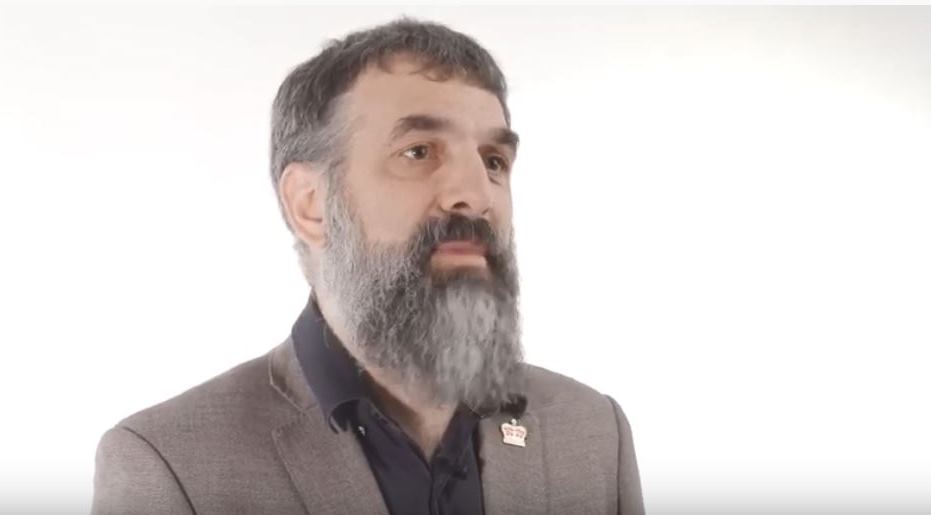
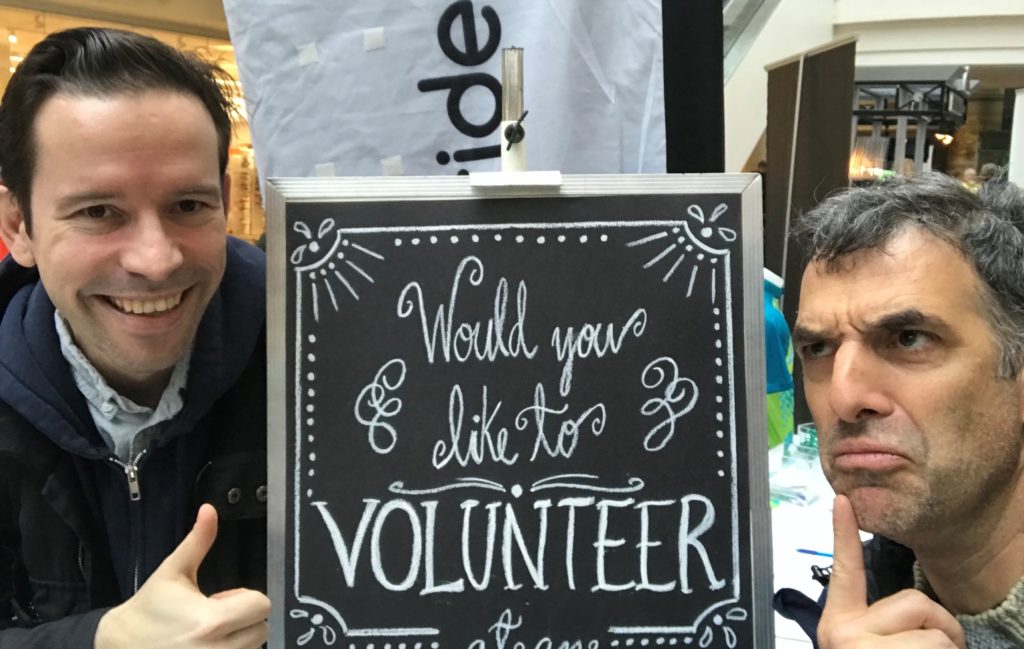
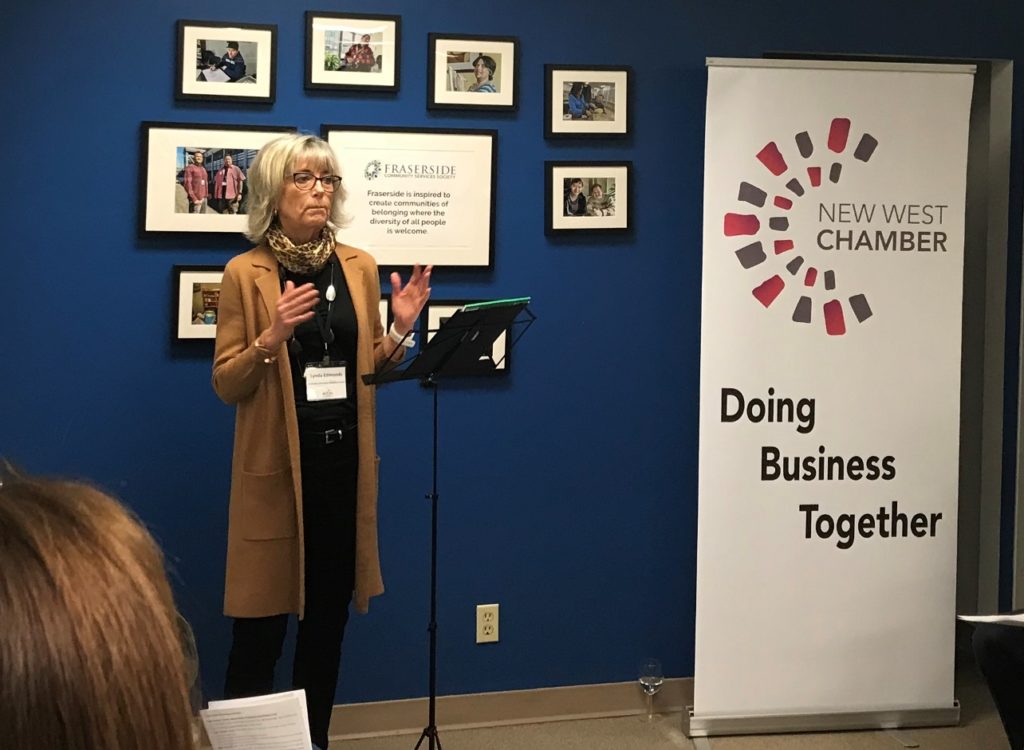

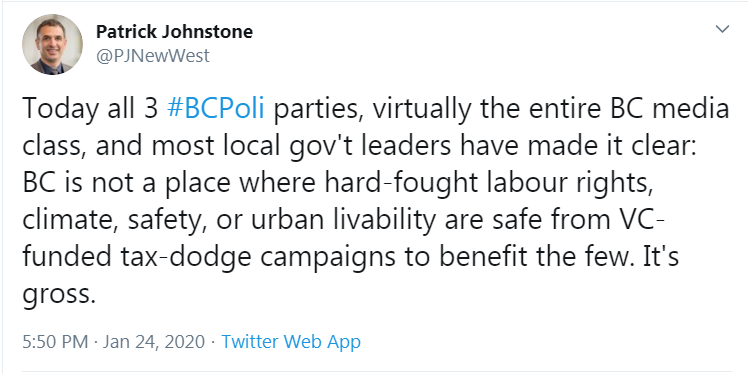
 Since my last of these community updates, we ran into snowpocalypse or snowmageddon or
Since my last of these community updates, we ran into snowpocalypse or snowmageddon or 